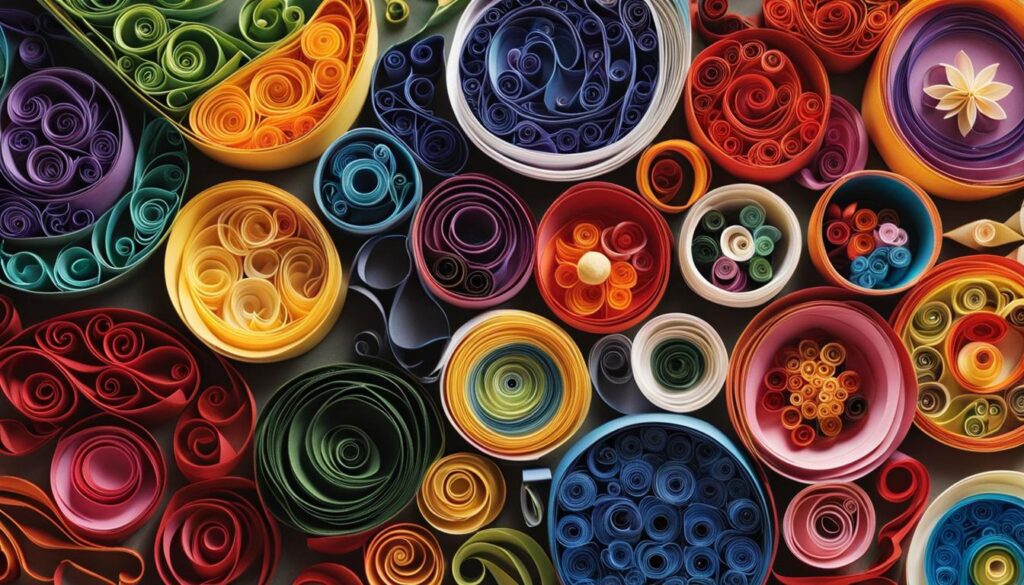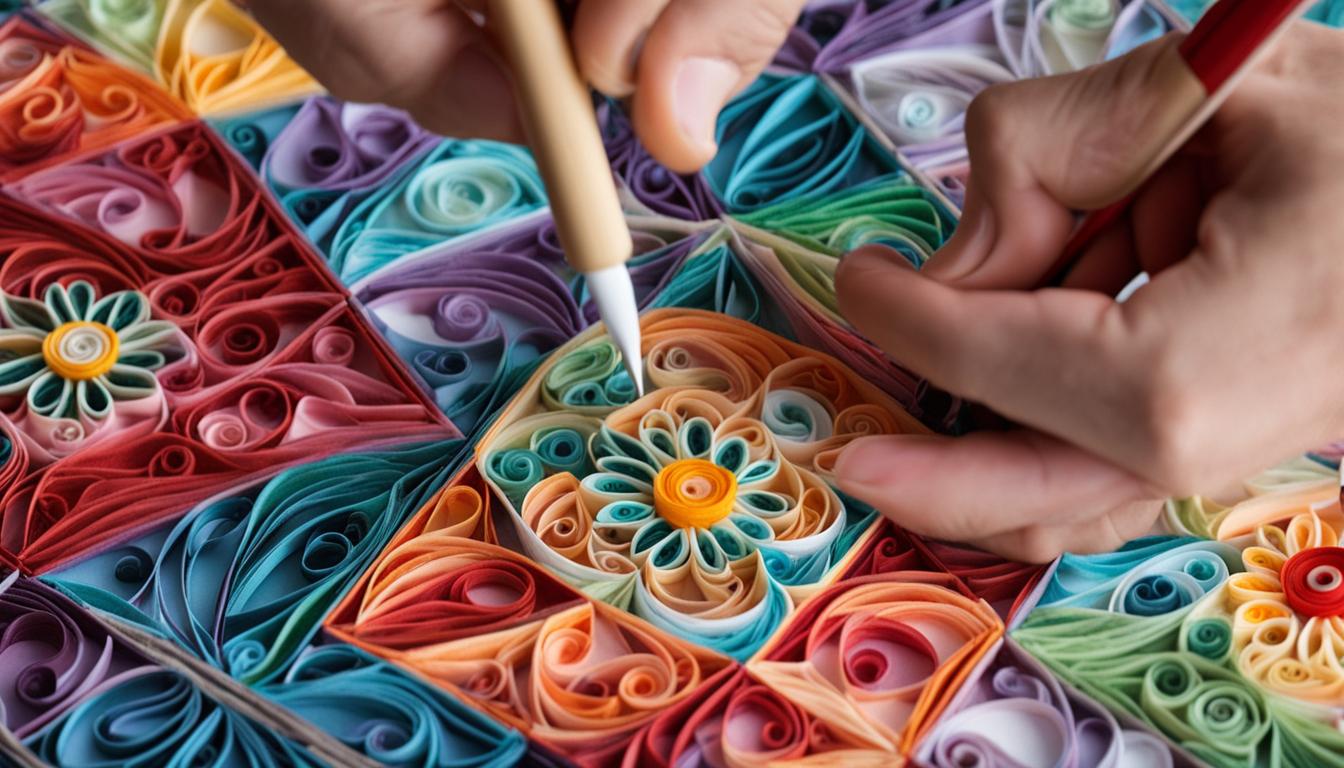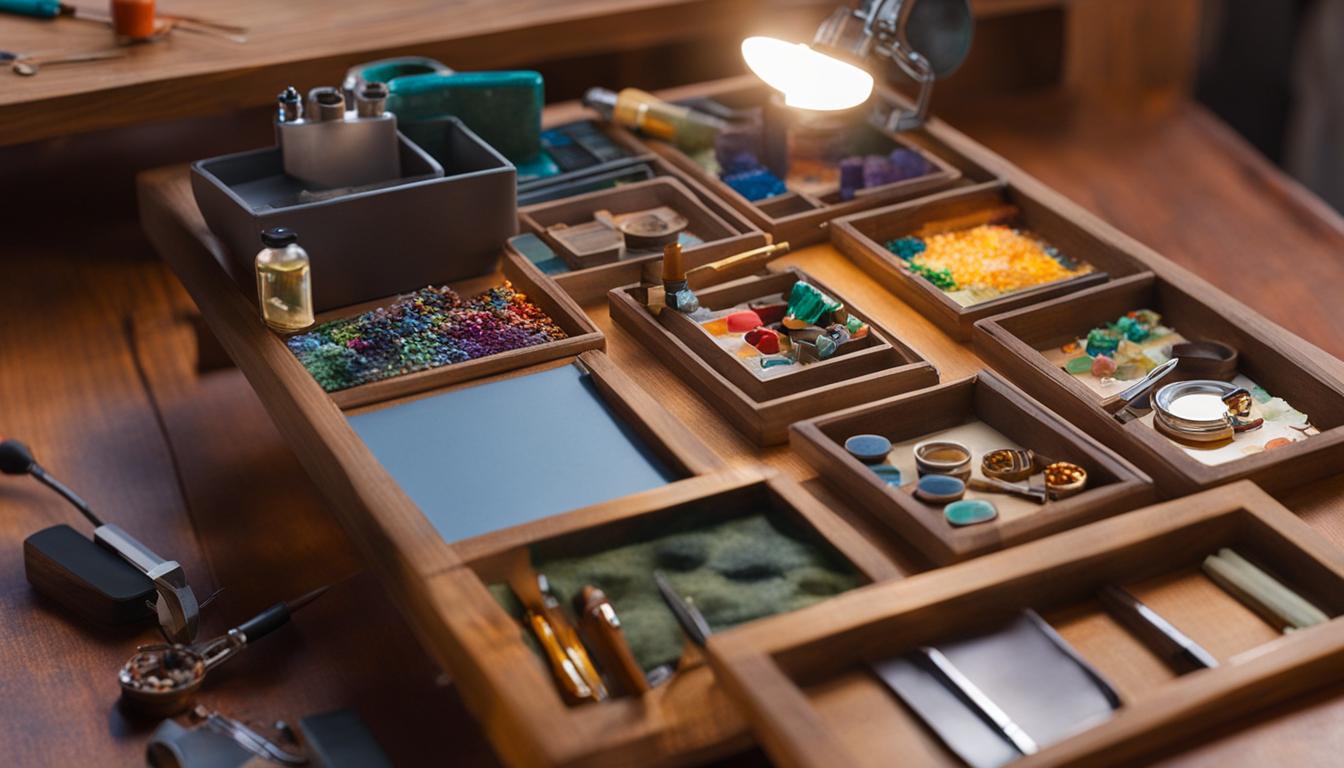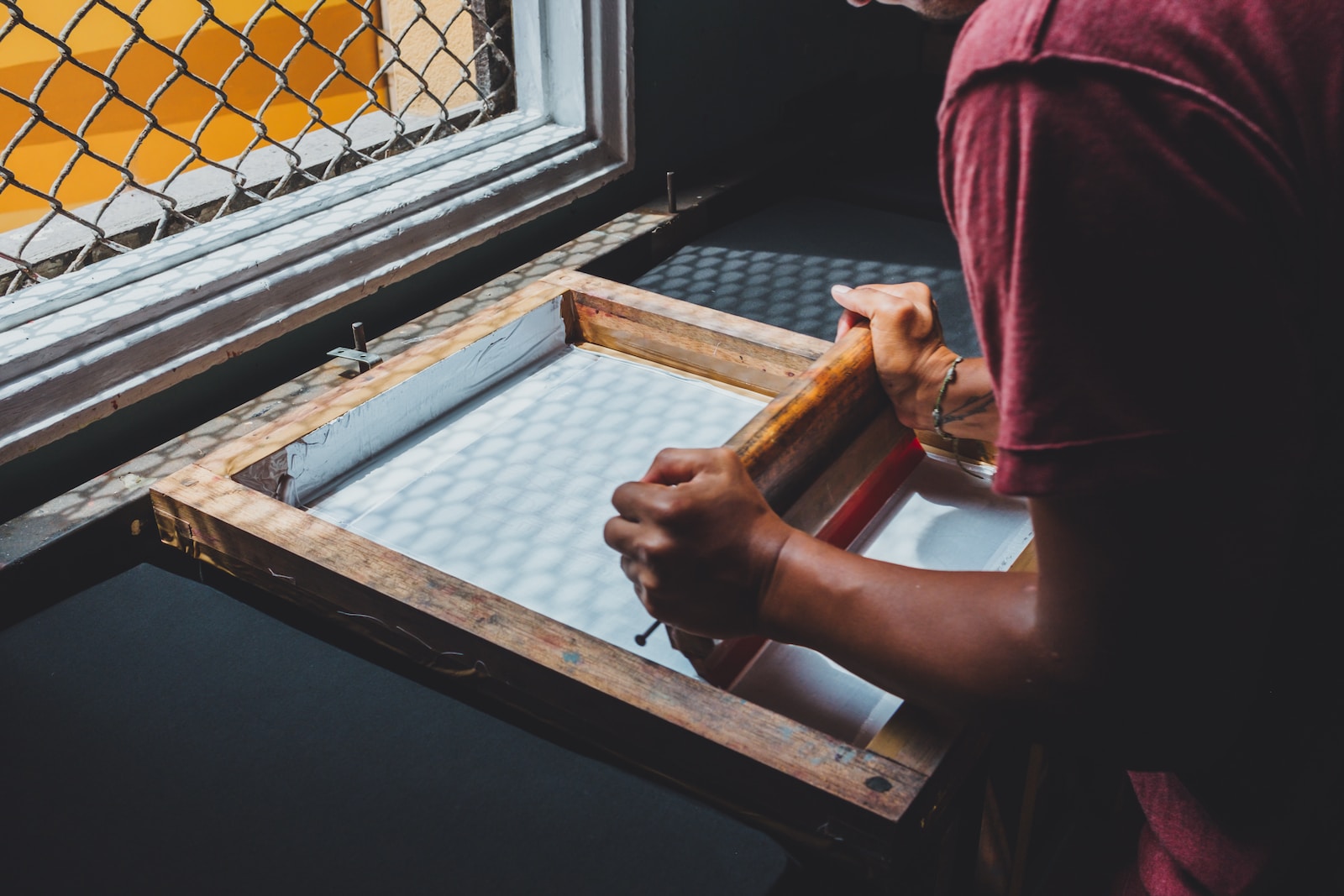Quilling and quilting, two popular crafting techniques, are both known for their intricacy and beauty. But when it comes to time consumption, which craft takes the crown? Let’s dive into the differences between quilling and quilting to determine which one requires more time and effort.
Key Takeaways:
- Quilling and quilting are both time-consuming crafts that require skill and dedication.
- Quilling involves rolling, shaping, and gluing paper strips to create decorative designs, while quilting involves sewing together fabric pieces to make a layered quilt.
- The time commitment for each craft depends on factors such as design complexity, project size, and individual expertise.
- Quilling offers intricate designs and the ability to create unique paper art, while quilting allows for functional and decorative quilts.
- Ultimately, the choice between quilling and quilting comes down to personal preferences and the desired outcome.
Quilling: Tips and Techniques
Quilling, the art of rolling and shaping paper strips, is a beautiful and intricate craft that requires attention to detail and precision. Whether you’re a beginner or an experienced quiller, here are some tips and techniques to help you perfect your coils and create stunning quilled designs.
Choosing the Right Tools
- Paper Quilling Strips: Use high-quality paper quilling strips in various widths to achieve different effects and create visually interesting designs.
- Quilling Needle Tool: A quilling needle tool is essential for rolling the paper strips into tight coils. It helps in creating consistent and uniform shapes.
- Quilling Board: A quilling board with different size circles and grids provides a convenient way to measure and shape your coils accurately.
Perfecting Your Coils
- Tight Coiling Technique: To create tight coils, start by applying a small amount of glue to the end of the paper strip. Use the quilling needle tool to roll the strip tightly from one end to the other.
- Loose Coiling Technique: If you want to create looser coils, simply roll the paper strip without applying glue. This technique is perfect for adding texture and volume to your designs.
- Combining Coils: Experiment with different shapes and sizes of coils to create unique designs. Combine tight and loose coils to add dimension and interest to your quilled artwork.
Avoiding Common Mistakes
While quilling can be a rewarding craft, it’s important to be aware of some common mistakes and how to avoid them:
“One of the most common mistakes in quilling is ripping the paper. To prevent this, make sure to use a gentle touch when handling the paper strips and avoid applying too much pressure. If you tear a strip, don’t worry! You can still use it for smaller details or cut it into shorter lengths.”
With these tips and techniques, you’ll be well on your way to creating beautiful quilled designs. Remember to practice, experiment, and let your creativity soar!

The Edwardian and Victorian eras saw a resurgence of interest in quilling. Upper-class women used quilling as a form of artistic expression, creating intricate designs to adorn their homes and personal belongings. Quilled items such as tea caddies, fans, and hair accessories became fashionable during this time.
| Period | Key Highlights |
|---|---|
| China/Egypt | Believed to be the birthplace of quilling, around the time paper was invented |
| Medieval Period | Quilling practiced by religious communities in Europe for decorative purposes |
| 15th Century England | Quilling gained popularity as a substitute for expensive materials |
| Edwardian and Victorian Eras | Quilling became a popular pastime among upper-class women as a form of artistic expression |
Today, quilling is practiced worldwide and has gained recognition as an art form. Artists and crafters continue to push the boundaries of quilling, exploring new techniques and expanding the possibilities of this intricate paper craft.
Quilting: Techniques and Tools
Quilting is a versatile craft that offers a wide range of techniques and tools for creating beautiful and functional quilts. Whether you’re a beginner or an experienced quilter, understanding these techniques and having the right tools at your disposal can enhance your quilting experience and help you achieve better results.
Quilting Techniques:
There are several quilting techniques that you can explore depending on the style and design of your quilt. Some common quilting techniques include:
- Hand Quilting: This traditional technique involves stitching the layers of fabric together by hand. It requires patience and skill to create even stitches and intricate designs.
- Machine Quilting: Using a sewing machine, you can create beautiful quilting designs with more speed and precision. Machine quilting allows for a variety of stitch patterns and is great for larger quilts.
- Free-motion Quilting: This technique involves moving the fabric freely under the sewing machine needle to create unique and artistic quilting designs. It requires practice to achieve smooth and fluid movements.
Quilting Tools:
To make your quilting process more efficient and enjoyable, having the right tools is essential. Here are some common quilting tools that every quilter should have:
| Quilting Tool | Description |
|---|---|
| Rotary Cutter | A sharp, circular blade tool used for cutting fabric accurately and quickly. |
| Quilting Ruler | A transparent ruler with measurements to ensure precise cuts and straight lines. |
| Quilting Needles | Specifically designed needles for quilting, with a sharp point and larger eye to accommodate thicker threads. |
| Quilting Thread | A strong and durable thread that is resistant to breaking and can withstand the wear and tear of quilts. |
| Quilting Hoop or Frame | A tool used to hold the quilt taut while hand quilting, ensuring even tension and easier stitching. |
These are just a few examples of quilting techniques and tools available to quilters. Exploring different techniques and investing in quality tools can elevate your quilting projects and help you achieve professional-looking results.
Quilting vs. Quilling: Time Requirements
When it comes to quilling and quilting, both crafts require a significant time commitment. The intricacy of the designs and the size of the projects play a role in determining the time required for each craft. Quilling, with its smaller and more intricate designs, can be a time-consuming process. Each coil and shape requires careful attention to detail, resulting in a stunning final piece. Quilting, on the other hand, involves larger fabric pieces and stitching, which can also take a considerable amount of time.
To manage the time effectively, it’s important for crafters to plan their projects and set realistic goals. Creating a schedule and allocating specific time slots for quilling or quilting can help ensure progress and prevent burnout. Breaking down a project into smaller, manageable tasks can also make the overall time commitment feel less overwhelming.
Additionally, it’s essential to find a balance between crafting and other commitments. Time-consuming hobbies like quilling and quilting require dedication, but it’s important not to neglect other aspects of life. Prioritizing and managing time effectively can help crafters enjoy their passion while still fulfilling other responsibilities.
Table: Comparison of Quilling and Quilting Time Requirements
| Quilling | Quilting | |
|---|---|---|
| Design Complexity | High | Varies |
| Project Size | Small | Large |
| Time Required | Time-consuming | Can vary |
The table above provides a comparison of the time requirements for quilling and quilting. While quilling generally involves highly complex designs and smaller projects, quilting can vary in terms of design complexity and project size. This variation makes it difficult to determine an exact time commitment for quilting. However, both crafts require a significant investment of time, and it’s important for crafters to consider their own schedules and commitments before embarking on a project.
Conclusion
Quilling and quilting are both fascinating and time-consuming crafts that require dedication and skill. As we have explored in this article, there are significant differences between these two art forms. Quilling involves working with paper strips to create intricate and decorative designs, while quilting involves sewing fabric pieces to make functional and decorative quilts.
The time requirements for both quilling and quilting can vary greatly depending on the complexity of the design, the size of the project, and the individual’s level of expertise. Quilling often requires meticulous attention to detail and patience, making it a time-intensive craft. On the other hand, quilting involves larger fabric pieces and stitching, which also demands a significant amount of time.
Ultimately, the decision between quilling and quilting comes down to personal preferences and the desired outcome. Quilling offers the opportunity to create intricate paper art and explore unique designs, while quilting allows for the creation of functional and decorative quilts that can be cherished for years to come. Both crafts provide a wonderful creative outlet and require a commitment of time and effort.
Whether you choose to embark on the journey of quilling or quilting, remember to enjoy the process and embrace the time-consuming nature of these crafts. The end result will be a beautiful and unique creation that reflects your skills, creativity, and dedication.
FAQ
What is the difference between quilling and quilting?
Quilling involves rolling and shaping paper strips to create decorative designs, while quilting involves sewing together fabric pieces to make a layered quilt.
How long does it take to learn quilling?
The time it takes to learn quilling depends on individual skills and dedication, but with practice, beginners can start creating basic designs within a few hours.
What materials are needed for quilting?
Quilting requires fabric, a sewing machine or needles and thread, batting or wadding, and quilting rulers and templates.
Can quilling and quilting be considered art forms?
Yes, both quilling and quilting have gained recognition as art forms due to the intricate designs and creative expression they involve.
Which craft is more time-consuming, quilling or quilting?
The time commitment for each craft depends on various factors, but both quilling and quilting can be time-consuming due to the attention to detail and precision required.
 Skip to main content
Skip to main content


